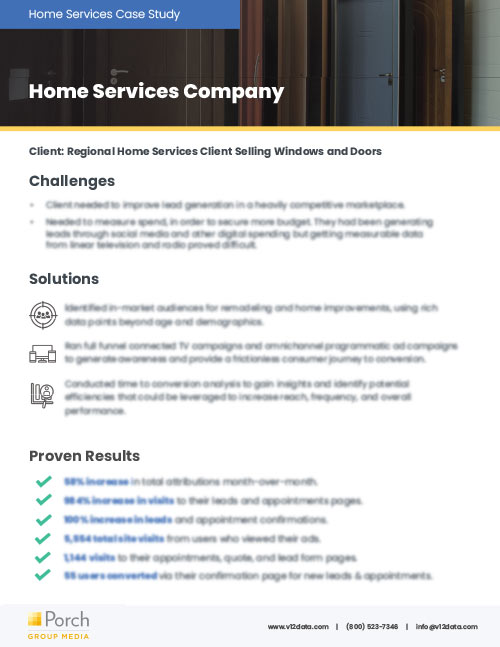Reach your ideal customers on their favorite CTV platforms.


On-demand streaming is thriving and here to stay. Millions of consumers are cutting the cord to watch what they want, when they want. Our hyper-targeted CTV advertising solutions get your message in front of streaming audiences that are in-market and ready to buy.
See how our full-funnel connected TV campaigns and omnichannel programmatic ad campaigns helped one home services retailer boost engagement and generate more leads.
